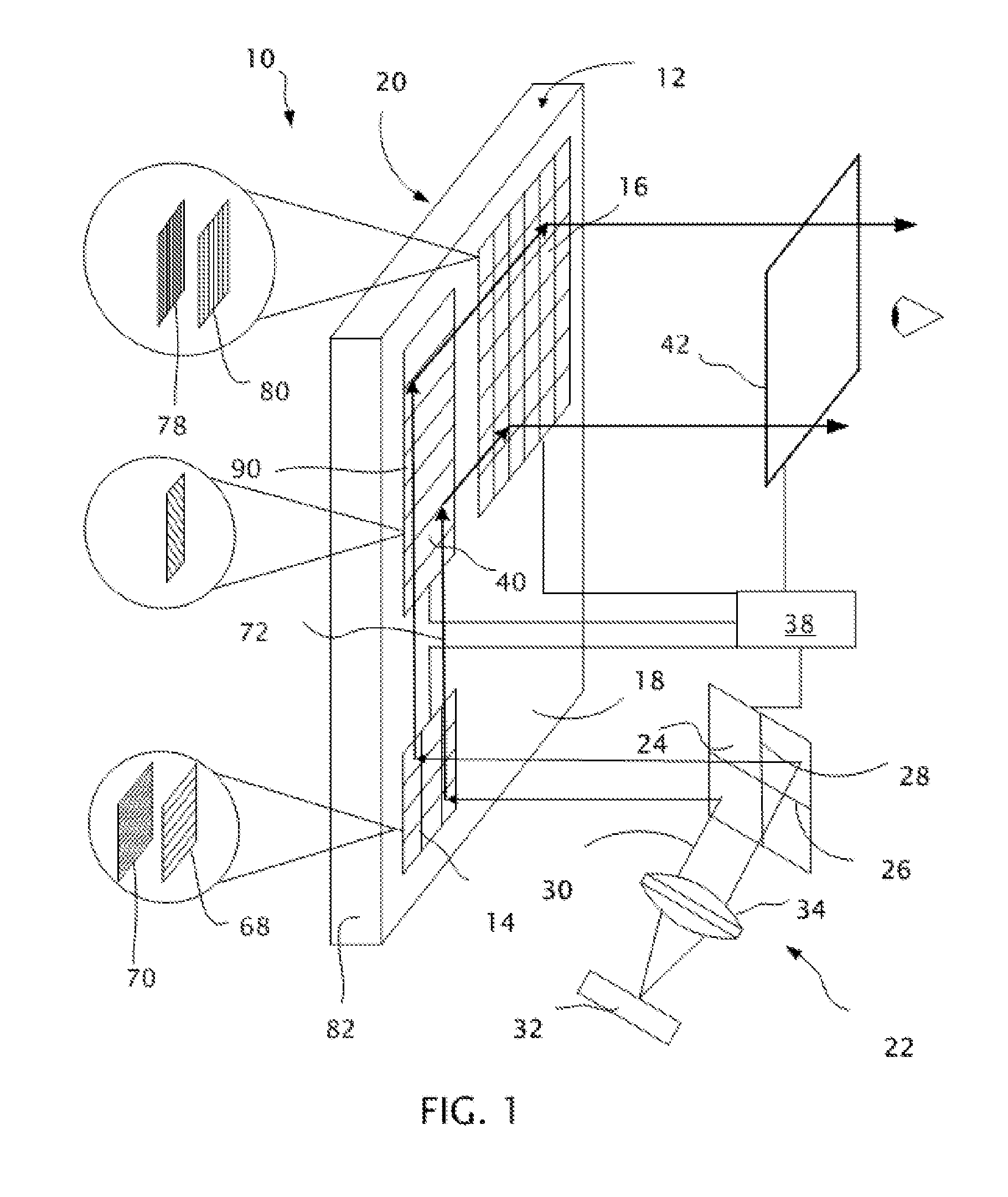Controllable waveguide for near-eye display applications
a waveguide and near-eye display technology, applied in the field of waveguide systems, can solve the problems of overly restricting the number of wavelengths or the different angles through which image information can be effectively transmitted, chromatic aberration, and many limitations of waveguide displays, and achieve the effect of expanding viewing areas and enhancing the quality of virtual images
- Summary
- Abstract
- Description
- Claims
- Application Information
AI Technical Summary
Benefits of technology
Problems solved by technology
Method used
Image
Examples
Embodiment Construction
[0025]With reference to FIG. 1, a near-eye display 10 includes a plate-shaped waveguide 12 having a controllable input aperture 14, a controllable output aperture 16 and a controllable intermediate diffractive optic 90. The plate-shaped waveguide 12 is preferably a transmissive plate having a back surface 18 (facing the viewer's eye) and a front surface 20 (facing the ambient environment), with both the back and front surfaces 18 and 20 being exposed to air or another medium with a refractive index that is preferably close to the refractive index of air.
[0026]The plate-shaped waveguide 12 can be made of various transmissive optical materials, such as BK7 glass having a nominal refractive index of 1.527, and has dimensions for transmitting light to a position within the field of view of a viewer from an off-axis position at which the light can be injected. For example, the plate-shaped waveguide 12 can have a length of approximately 60 millimeters for reaching the eye position, a hei...
PUM
 Login to View More
Login to View More Abstract
Description
Claims
Application Information
 Login to View More
Login to View More - R&D
- Intellectual Property
- Life Sciences
- Materials
- Tech Scout
- Unparalleled Data Quality
- Higher Quality Content
- 60% Fewer Hallucinations
Browse by: Latest US Patents, China's latest patents, Technical Efficacy Thesaurus, Application Domain, Technology Topic, Popular Technical Reports.
© 2025 PatSnap. All rights reserved.Legal|Privacy policy|Modern Slavery Act Transparency Statement|Sitemap|About US| Contact US: help@patsnap.com



